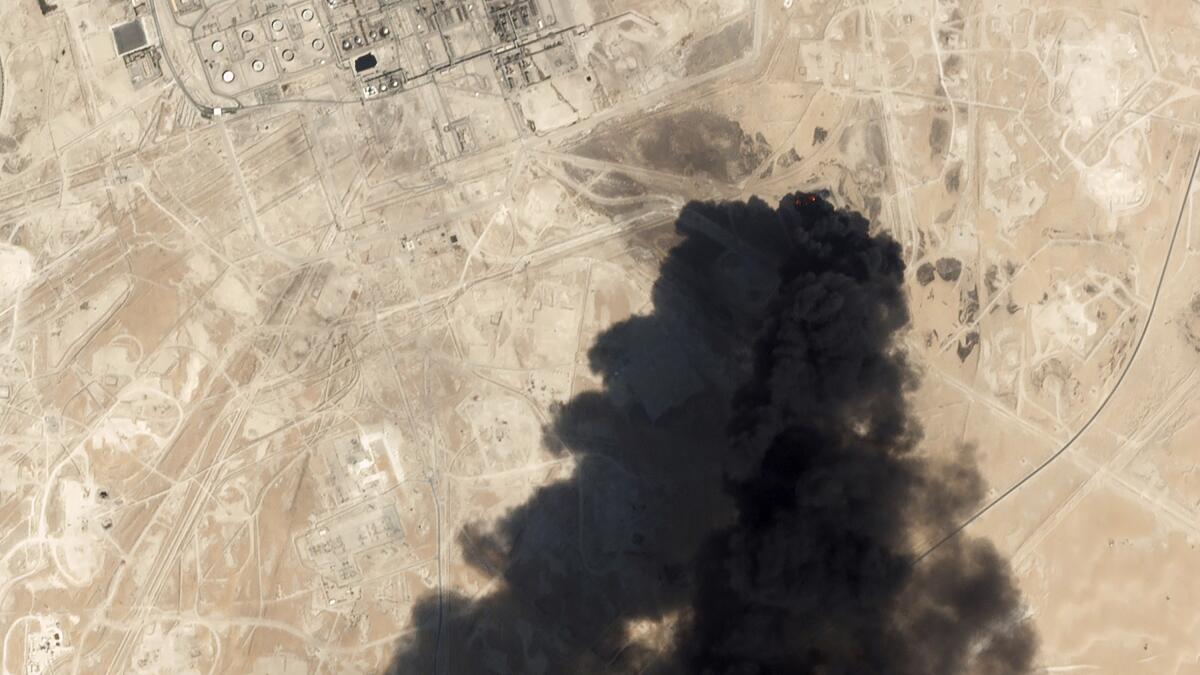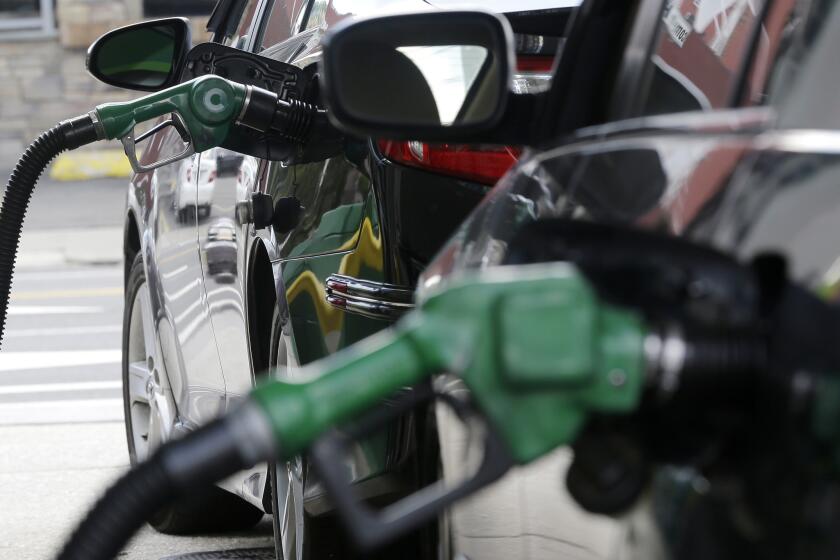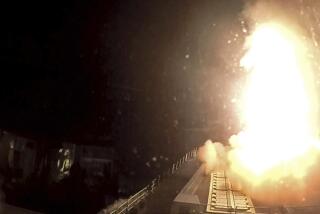Attack on Saudi facility exposes world economy’s ‘Achilles heel’

- Share via
The weekend attacks on Saudi Arabia’s oil infrastructure targeted what one analyst called the “Achilles’ heel of the world economy,” knocking out more than half of all production capacity in the world’s largest oil exporter.
The main target of the airborne attacks, which the U.S. has blamed on Iran, was the Abqaiq processing facility, which has been exposed as a key choke point for the kingdom’s oil supplies. The giant Khurais field, one of the world’s largest, was also hit.
Abqaiq is used to prepare up to 70% of Saudi Arabia’s production, most of it for export. The question for the oil market — and by extension the world economy — is how quickly it can be repaired. Four people briefed on the matter said on Monday that they believe it could be months until it is fully fixed.
What is Abqaiq?
The facility in the northeast of the country is “by far the most important oil facility in the world,” said Bob McNally, former energy advisor to George W. Bush, as no other field or refinery handles so many barrels on any given day.
McNally’s Rapidan consultancy, which advises energy companies and oil trading hedge funds, flagged in May that the facility was a “systemic vulnerability,” as without it the world would lose around 7 million barrels a day of crude supplies, or roughly 7% of the total. “If you are making and monitoring a list of critical energy infrastructure, Abqaiq belongs at the very top,” McNally said.
Connected to some of the world’s largest oil fields by pipelines, including Saudi Arabia’s giant Ghawar field, the site consists of a complex mix of equipment used to essentially clean and prep the kingdom’s oil for export.
They do this by removing impurities such as sulphur and heavy metals that have the potential to damage refining equipment once the crude has been sold and shipped overseas. Gas associated with crude oil production is also extracted from the mix to be sold separately or burnt in Saudi Arabia’s own power stations. Natural gas liquids, such as propane and butane, are also separated off from the crude to be sold.
Saudi Arabia has said the attacks forced it to lose 5.7 million barrels per day of crude production, 700,000 barrels of NGLs, and a large amount of the kingdom’s natural gas output.
Within a week or two, California gas prices could go up 10 to 25 cents a gallon — or even higher if the Saudi oil plant doesn’t regroup quickly.
What did the attacks target?
The attacks, which were first claimed to have been carried out with drones by Iranian-backed Houthi militias in Yemen, appear to have been precisely coordinated and targeted. U.S. officials are reported to have suggested they suspect missiles may have been part of the attacks.
Commercial satellite imagery released by the U.S. shows that a number of spheroid domes, used to separate gas from the crude and to stabilize it for export, appear to have been hit.
Around half of the desulphurization towers, used to clean out highly corrosive substances from the oil, have also been affected, according to Energy Aspects, a consultancy.
While state oil company Saudi Aramco is probably pouring resources into starting repairs — and as the world’s most profitable company it has deep enough pockets — suspicions are growing it could take a long time to get back to full working order.
It is not the first time the Abqaiq site has been attacked. Security was increased after Al Qaeda launched an unsuccessful attack on the facility in 2006, with Saudi Arabia’s enemies aware of its strategic significance.
Will repairs be straightforward?
Most likely not. While information is still relatively sparse, one refining engineer who has worked at Abqaiq said the complexity and specialist nature of the various units at the site meant it would take time. There are no off-the-shelf replacements, and if any units need to be replaced then construction is not straightforward.
The spheroids will need to be drained, cleaned and inspected. Repairs would be a lengthy procedure that involved joining together thick plate steel. They would need to be pressure tested to ensure they are safe. “Most non-engineers underestimate the time to do anything,” the refining engineer said.
Analysts at Bernstein Research say that, given the complexity of the system, even planned maintenance can take up to three months.
Stuart Joyner at Redburn, a research firm, said Monday’s jump in oil prices, which were at one point 20% higher, “reflects growing pessimism about a quick repair to the facilities.”
What can the Saudis do now?
The kingdom has options, but none are without downside. Its first response will be to bring oil out of storage to try to maintain exports, both from domestic stockpiles and from inventories held overseas. But draining its own stockpiles may leave the market more nervous about future supply outages, and they are already said to be at a low level.
Kpler, a data intelligence company, said on Monday its tracking of Saudi crude suggested the kingdom had less than 100 million barrels of crude in inventories available for the market. That could be drained in little over a month even if Saudi Arabia can get about half of its lost output back online.
Saudi Arabia’s remaining crude oil production is also likely to be prioritized for export, and redirected away from its own refining system. This will necessitate Saudi Arabia buying more gasoline, diesel and jet fuel on the open market.
Saudi Arabia may also try to raise production at other fields that are not as reliant on Abqaiq, though this would leave the world with very little spare capacity.
“Aramco will look to starve their domestic refineries so they can meet export commitments … [they] will have to import oil products in fairly sizable quantities,” said Saad Rahim, chief economist at Trafigura, one of the world’s biggest independent oil traders.
“The fundamental question is whether the market starts to question the long-term security of Saudi supply. This is the Achilles’ heel of the global economy.”
© The Financial Times Ltd. 2019. All Rights Reserved. FT and Financial Times are trademarks of the Financial Times Ltd. Not to be redistributed, copied or modified in any way.
More to Read
Inside the business of entertainment
The Wide Shot brings you news, analysis and insights on everything from streaming wars to production — and what it all means for the future.
You may occasionally receive promotional content from the Los Angeles Times.











